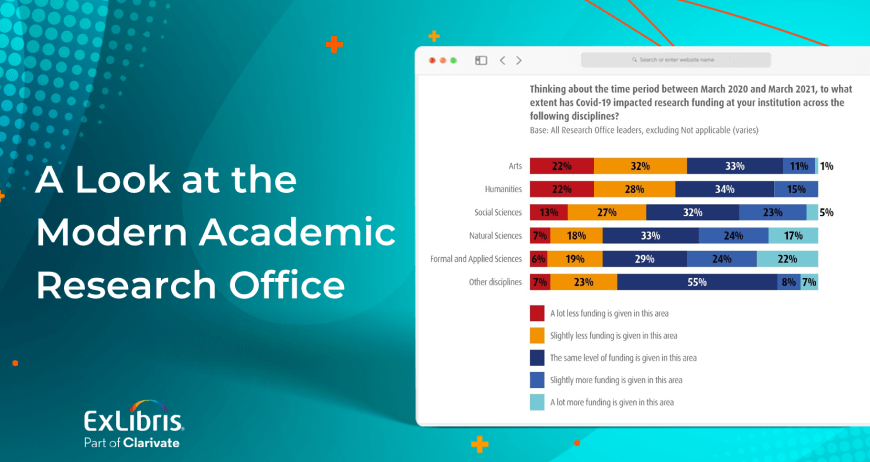Dani Guzman, Ex Libris
Academic research is becoming more interdisciplinary in nature as researchers aim to solve large global challenges that span many different fields — and this has become even more critical as global challenges such as the COVID-19 pandemic affect daily operations worldwide. At the University of Montana, Associate Vice President of Research Scott Mills is bringing together researchers from various departments to encourage this type of cross-disciplinary collaboration.
Mills, who is a member of the Ex Libris Research Management Advisory Council, has a lot of experience in doing just that. He was one of the first hires when North Carolina State University launched its Chancellor’s Faculty Excellence Program in 2011, which created cross-disciplinary clusters of faculty to address some of the world’s most pressing problems. He has brought his talent for fostering collaborative research to the University of Montana, where he also heads the Mills Lab, an interdisciplinary research group focused on wildlife conservation.
As one example of what’s possible when researchers from different departments collaborate, Mills helped pull together conservational biologists, geneticists, and ethicists at University of Montana to explore the ethics of using genetic engineering to save endangered species through a grant to the National Science Foundation.
In a recent conversation, Mills recommended four key strategies for fostering this type of rich collaboration across academic departments.
1. Create opportunities to bring people together.
Successful collaboration should grow organically from the ground up as opposed to being mandated from on high, Mills believes. For this to happen, researchers need opportunities to meet each other and discuss their work.
With COVID-19 forcing institutions to adopt social distancing measures, these types of interactions are now happening via Zoom and other video conferencing platforms. But in a pre-COVID world, they typically happened through informal gatherings.
“As we all know, everybody’s busy,” Mills said. “You’ve got to crack the nut of first having people find it’s worth their time.” For Mills, that meant ensuring refreshments were served at these gatherings. “I became known as the guy who was always trying to build collaborations with free coffee, beer, and wine,” he joked.
2. Offer incentives that encourage people to step out of their comfort zone.
Collaborating with colleagues in other colleges or departments involves some element of risk. “Some people might not feel comfortable in stepping outside the terrain where they’ve been successful their whole career,” Mills explained. “You’ve got to provide reassurances” that it’s OK for them to take this risk.
One way institutions can do this is to provide incentives for collaborating across colleges or departments. For instance, at both of his institutions he has catalyzed grant funds offered by the chancellor’s or research office to encourage faculty to collaborate.
“Faculty could apply for this seed money, but their research teams had to be drawn from two different colleges and three different departments,” he said. “I thought that was a great strategy.
3. Remove structural barriers to collaboration.
Even if the administration is supportive, there might be structural barriers that stand in the way of interdisciplinary collaboration.
When NC State implemented its seed funding idea, “we ran into a buzz saw from the different accounting departments,” Mills recalled. “Each college had its own fundamentally different forms that principal investigators had to fill out. The forms were incompatible with each other. Just the process of submitting PI information to the research office was a challenge.”
These are the kinds of hurdles that administrators must eliminate if they want researchers to work together across colleges or departments. “People don’t want to spend time banging their head against a wall like that,” Mills said — and so they won’t take advantage of opportunities to collaborate if those types of barriers exist.
4. Raise the profile of researchers’ work.
Regardless of the size of the university, it can be hard for researchers to know what others at their institution are doing — and what opportunities might exist for interdisciplinary collaboration. Having a formal system for publicizing this information is important, and especially now that face-to-face gatherings and social events are limited.
“If you can put out information about researchers’ accomplishments, you increase the respect they get from people in other disciplines and improve the chance that somebody will have a transformative, ‘aha’ moment (where inspiration strikes),” Mills said.
He gave an example of this type of serendipitous collaboration: “I do a lot of research on climate change adaptation. It turns out that someone in our dance department was putting together a group to try to convey scientific topics like climate change to a popular audience. Boom! When I read about this person’s work, I realized there was an opportunity to reach out and say, ‘Hey, here’s some of my research. The animals I study are very charismatic. Would you like to incorporate that into your dance?’”
He added: “We’re hoping that Esploro will help us capture and communicate the work we’re all doing, so we can generate excitement among researchers about what their colleagues are working on.”
Dr. L. Scott Mills is the Associate Vice President of Research for Global Change and Sustainability and Professor of Wildlife Biology at the University of Montana. He is a member of the Ex Libris Research Management Advisory Council.
Learn more about the Ex Libris integrated library system and how it can support your network.










